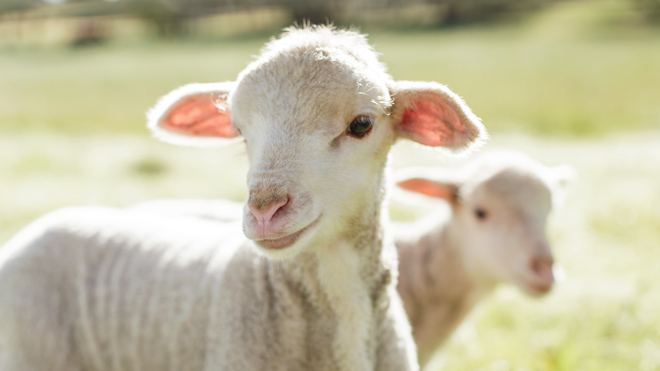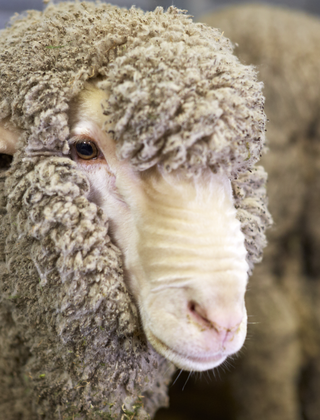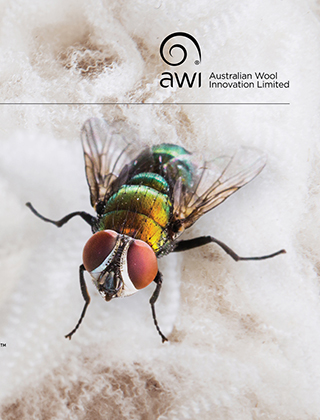Keeping up to scratch with vaccinations

Vaccinations are often a relatively cheap way of preventing disease in your flock. But what things should you consider when deciding which vaccines to use on your property? Here we provide an extract from a recent webinar in which Kojonup-based veterinarian Dr Michylla Seal provided some handy advice.
The AWI | TLC Partner Program recently held a webinar with veterinarian Dr Michylla Seal of Genstock who provided a summary of what to consider about vaccinating sheep.
“There's much about our animals’ health that we can't control, but preventing disease through vaccination is something that we can control. So be proactive. The benefits of using preventative medicine can far outweigh the costs of being reactive and having to deal with disease in your sheep when it strikes,” Dr Seal said.
“However, there is no one vaccination program that suits all sheep and wool producers. Whether and when to vaccinate depends on your sheep enterprise’s circumstances.”
Dr Seal says the decision as to whether to vaccinate is based on factors including:
- Prevalence of the disease in your area – what is the likelihood of the disease occurring?
- Cost and impact of the disease – will an outbreak of disease have a large or minor cost and impact on your business?
- Class of animal – does disease pose a risk to a particular class of sheep? Is that class going to be retained on your farm, traded, or sent to slaughter?
- Cost and efficacy of the vaccine – do the benefits of a particular vaccination outweigh the costs in terms of money, time, and welfare?
- Your attitude to risk – how much of a risk do you want to take?
“The other thing to be aware of with vaccination is that achieving success is not just due to the vaccine, it’s also about whether the sheep is in a good enough condition and health at vaccination time to have the ability to get the most out of the vaccine and form a good immune response,” Dr Seal said.
“Vaccination gives the majority of the animals good, adequate protection, but there will be a small proportion of animals that have a poor response. Although it might be due to a human misapplication of the vaccine, most of the time will be because those animals are nutritionally challenged and in poor condition.
“So if you get an incidence of disease after vaccination, it's not because the vaccine is no good, it could well be because a proportion of the animals were doing it tough, such as during a poor season. Don't stop vaccinating because of that; you should be making sure that you are giving them as much protection as you can.
“Never hesitate to reach out to a veterinarian to ask for help if you've got any concerns.”
Below is an extract of what Dr Seal said in the webinar about the various vaccines.
Clostridial vaccine
Clostridial diseases (pulpy kidney, tetanus, black leg, black disease and malignant oedema) and cheesy gland are all preventable by vaccination. Pulpy kidney is a disease that is especially important to watch out for. It’s seen usually when there has been a change in feed, such as after a break in the season or when sheep are moved into containment or a feedlot. Cheesy gland can cause a lot of losses in terms of carcase trimming and contamination; and it can also cause a loss of about 4–7% in clean fleece weight in the first year of infection.
Recommendation:
For maximum protection of young lambs from clostridial diseases, vaccinate ewes three to six weeks before lambing. We want the ewes’ antibody level high enough so she’s transferring across in her colostrum, that first line of milk, sufficient maternal antibodies to protect that new lamb up until its own first vaccination at marking.
The vaccination of the lamb at marking is a priming dose that provides only short term protection. It's important that a second dose is given at weaning to get the lambs’ immune response really up and going and provide longevity in protection. Then we need give them an annual booster.
Cheesy gland vaccine is incorporated in the clostridial vaccine, either as 3-in-1 (pulpy kidney, tetanus, cheesy gland) or 6-in-1 (pulpy kidney, tetanus, black disease, black leg, malignant oedema, cheesy gland). The immunity to pulpy kidney appears to last for a much shorter period, and boosters should be timed to occur prior to a high challenge (grazing high quality feeds in rapidly growing lambs, lucerne or grain feeding).
I tend to recommend a 6-in-1 for rams. I wouldn’t want someone buying a ram and then it dying. Most seedstock producers are using a 6-in-1 in their rams. But every property is different, so what you choose depends on your own circumstances.
Ovine Johne’s Disease (OJD) vaccine
The development of OJD in an animal is slow and insidious. From the time an animal contracts OJD to the time that we see signs, it can be three to five years. It usually presents as ill thrift. There isn't always scouring but occasionally there is. The animal just starts losing weight and then dies within about three months.
The disease is in most sheep areas of Australia but there are different environments where it survives better; for instance it’s not going to survive long in 40 degree heat. An animal with OJD starts spreading the disease in its faeces by about two years of age, so you could have a clinically normal animal contaminating your environment.
Recommendation:
The vaccine (Gudair®) costs more per head than other vaccinations but it provides lifetime protection.
In endemic areas, I’d recommend vaccinating all replacement animals being kept over two years of age. But it's a waste of money to vaccinate an animal that’s not being kept over two years of age unless they are being sold to someone that’s going to use them as breeders or wethers that are going to be keep for wool. It’s also a waste of money and time vaccinating any that are going to slaughter. So just vaccinate your keepers.
I recommend my studs to vaccinate for OJD because it enables market access for their rams.
The best time to vaccinate is at lamb marking because OJD is spread by the faecal-oral route. As soon as lambs start to graze, they’re at risk of picking it up.
Be very careful when vaccinating. I’ve known numerous people self-inject and need multiple surgeries. So use the Sekurus vaccination gun. The first time you use it, you’ll find it has a different action to what you’re used to with other vaccinations. But once you get a feel for it, it works really well at protecting you.
Campylobacter vaccine
Campylobacter doesn't become a problem unless ewes are exposed for the first time when they’re pregnant. That’s where we get the abortion. Usually if they’re not pregnant, the ewe gets a bit unwell and then gets over it.
Recommendation:
I tend to recommend with this vaccine (Campyvax®) to give two shots in the first year of life and you’ll then tend to find they’re protected really well.
If your ewes are contained during pregnancy or you’re in cooler and moist climates, vaccination would be something that I’d be thinking about.
We can actually test animals to see if the disease is on a property. But having it on a property and it causing disease depends on the lambing time. If you’re an early lamber, you might not have an issue.
Erysipelas vaccine
Lambs usually pick up arthritis soon after birth. Ewes hold the bacteria in their throat so when they are cleaning their lambs, that is when it is spread a lot. But it can also be spread at marking.
Recommendation:
When considering the arthritis vaccine, it’s really important to consider what level the arthritis is on your farm – it is very variable and every farm is different. You’ve got to consider the cost versus its benefit, which largely depends on the incidence of the disease on your farm.
Some people get a very low incidence by just doing a vaccination at marking. But if they have a higher rate, they might need to include it in the pre-lambing vaccination to boost the antibodies in the ewes’ colostrum and thereby reduce incidence in the lambs. Vaccination of lambs at weaning will provide long-term protection if needed.
Vaccination is a lot easier to justify when there is a really good reproduction rate and there are a lot of lambs.
Also, I tend to find if we vaccinate for Erysipelas, we also tend to minimise the other bacteria that cause arthritis as well. We’re not exactly sure how, but that’s what I tend to see.
Scabby mouth vaccine
Scabby mouth is most common in lambs in their first year of life. All it takes is a little cut to give the virus an opportunity – oral abrasions from grazing stubbles or pellets can predispose animals to infection. In mild cases the virus just runs its course, but severe lesions that have secondary bacterial infections can render affected lambs unable to feed. Sheep can also get infected on the nose and feet, and ewes can get it on their teats which can affect their rearing of the lamb.
Recommendation:
The scabby mouth vaccine (Scabigard®) is a live vaccine that is needed only once. I only recommend a booster in high risk environments.
When vaccinating a lamb, you should just scratch the bare skin when they are in the lamb marking cradle. You don’t want to draw blood because it will wash the vaccine away.
You should do the vaccination on an area of the animal where it can’t put its mouth and get infected. The best place is underneath the arm. Don’t vaccinate in the back leg because a suckling lamb or the vaccinated animal can be exposed on the mouth and might get infected.
When an animal loses a scab (either from the scratch line or from an infected area), it introduces the virus to the environment. Out in the open, the virus dies off pretty quick, but it can persist for long periods around sheds and in feeders.
Vaccinated animals or animals that have had scabby mouth can still become reinfected but it is often milder, of shorter duration, and might go unnoticed.
Humans have to be very careful when using the vaccine and dealing with infected animals because it is a live vaccine and humans can get a bad infection.
Always read and follow label instructions
When using veterinary chemicals, it is crucial to always read the label and always follow the instructions exactly, without exception. Label recommendations describe the safest, most effective, and best way known to use the product.
More information: View a recording of the webinar at www.thelivestockcollective.com.au/our-projects/awi-tlc-partner-program
This article appeared in the Winter 2025 edition of AWI’s Beyond the Bale magazine that was published in June 2025. Reproduction of the article is encouraged.














